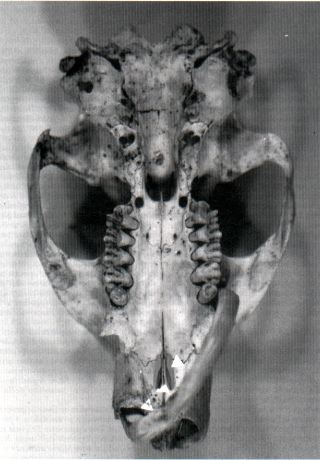Observation with optical microscope
Â
Crescita dentaria anomala in una marmota alpina
Barasa A. °, Galle Orsi U. * & Durio P. *° Dipartimento di Morfofisiologia, Università di Torino. 1-10126, Torino.
* Dipartimento di Produzioni Animali, Epidemiologia ed Ecologia, Università di Turino. 1-10126, Torino
Â
Osservazioni al microscopio ottico
Plate 1: Ventral view

Â